Charts of the Week
Current economic trends from 7 to 11 December 2020: exports and imports of goods, production volume in manufacturing, electricity consumption, traffic of electronically tolled vehicles and registered unemployment
In October the export-oriented part of the economy was not yet significantly affected by the renewed spread of the COVID-19 epidemic in Slovenia and its main trading partners. Both goods exports and manufacturing production increased further; the most modest recovery was still recorded in industries and goods related to the automotive industry. Data from the beginning of December on electricity consumption and freight traffic on Slovenian motorways confirm that industry has been less affected in the second wave of the epidemic than the service sector, which is subject to similar containment measures to those that were in place during the spring wave. Registered unemployment has remained at a similar level since October, which, in addition to the partial adaptation of businesses and consumers to different ways of operation, is mainly due to the extension of intervention measures and a smaller decline in economic activity than during the first wave.
Exports and imports of goods, October 2020
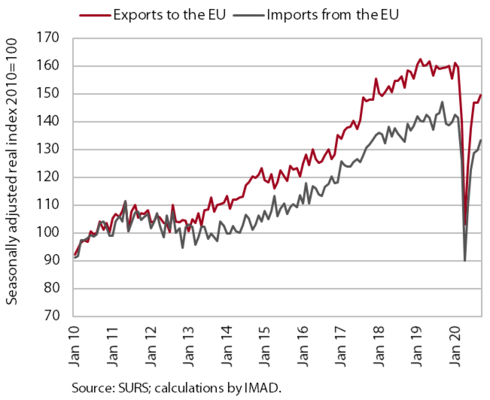
Goods trade continued to recover in October. The renewed spread of the epidemic in Slovenia and its main trading partners had a significantly smaller impact on export activity than in the spring, as goods exports to EU countries in particular recovered in October, where they were still lower year on year. A recovery was recorded for most main product groups (especially electrical equipment and industrial machinery). However, the recovery of exports of products related to the automotive industry has slowed in recent months. Imports of goods also increased (particularly of intermediate goods), but they also remained significantly lower year on year. Exports expectations deteriorated in November, which points to a decline in goods trade by the end of the year, but enterprises are nevertheless more optimistic about future foreign demand than during the first wave in the spring.
Production volume in manufacturing, October 2020
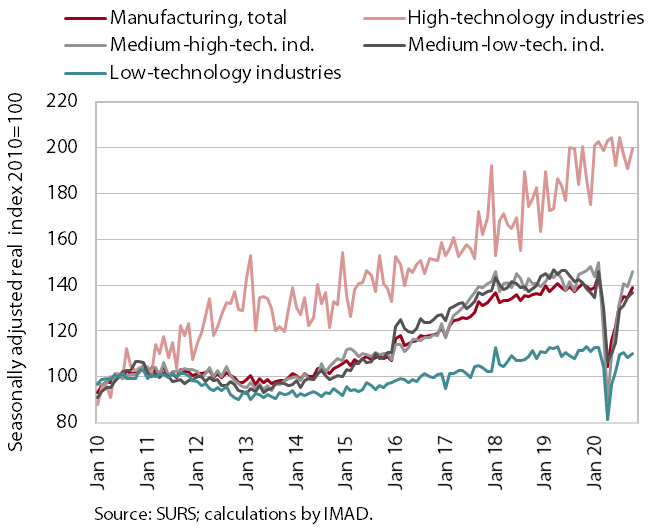
After a rebound in the third quarter, manufacturing production increased further in most industries in October. In the last months the recovery has been strongest in medium-high-technology industries, which have reached the levels from the beginning of this year, i.e. before the beginning of the epidemic. We estimate that this has mainly been due to the manufacture of machinery and equipment (which has also exceeded last year’s production levels) and the manufacture of electrical equipment. The recovery still lags behind in motor vehicle manufacturing (where the lag behind last year’s levels remains among the largest) and in some industries of lower technological intensity, which are suppliers in the automotive industry (particularly the metal industry).
Electricity consumption, December 2020
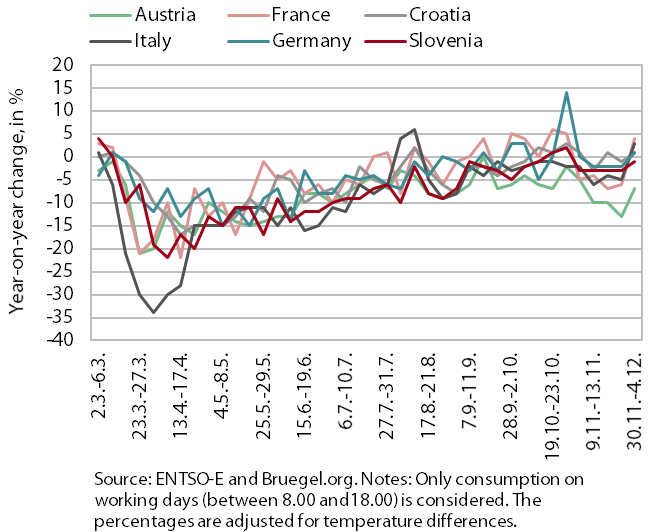
In the first week of December, the y-o-y decline in weekly electricity consumption was, as over the whole period of the second wave of the epidemic, significantly smaller than in the spring. Electricity consumption was 1% lower year on year (at the end of April and the beginning of May by around 5%). The smaller decline is mainly attributable to a lower fall in activity in industry than in the first wave of the epidemic. In our main trading partners the y-o-y fall was, as for several weeks, largest in Austria (7%). In others consumption exceeded last year’s level, in France and Italy by around 3% and in Germany and Croatia by 1%.
Traffic of electronically tolled vehicles on Slovenian motorways, December 2020
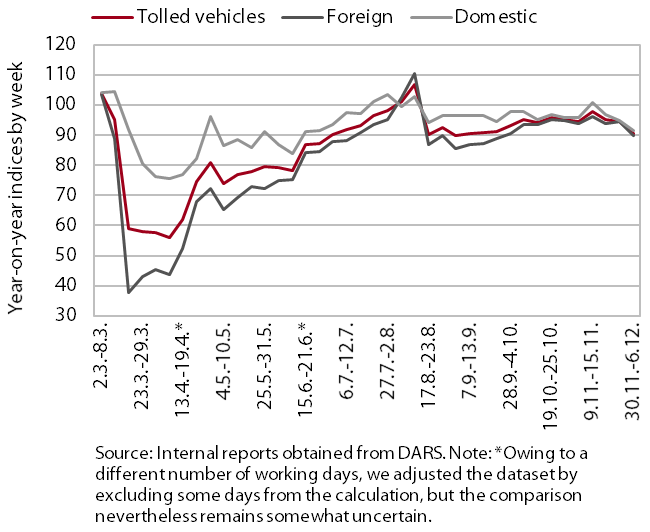
At the beginning of December, freight traffic on Slovenian motorways again fell slightly more below the pre-epidemic level, which can be largely attributed to snow. In the week between 30 November and 6 December it was 9% below last year's level, similarly for foreign and domestic hauliers. The smaller deterioration in comparison with the previous week is not so much due to the impact of restrictions in trade and accommodation and food service activities, but rather to worse weather and driving conditions, because if the day when the traffic flow was affected by snow and several accidents is excluded from the comparison, the data did not deteriorate significantly.
Registered unemployment, December 2020
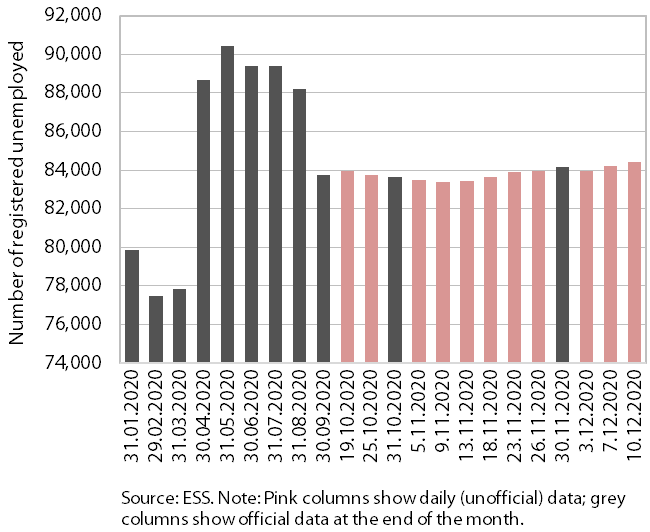
Amid the restrictions particularly on business operations in service activities since mid-October, in the middle of December the number of registered unemployed persons remained at almost the same level as in the previous three months. Following the strong growth in the first wave of the epidemic, the number of registered unemployed persons has been gradually falling since mid-year after the adoption of intervention job retention measures and the lifting of restrictions. Since mid-October, when the second wave of the epidemic was declared, the number has remained at a similar level, which, in addition to the partial adaptation of businesses and consumers to different ways of operation, is to a great extent due to the extension of intervention measures and a smaller decline in economic activity than in the first wave. According to ESS unofficial (daily) data, 84,440 persons were unemployed on 10 December, which is 0.4% more than at the end of November and around 12% more than in the same period last year.
